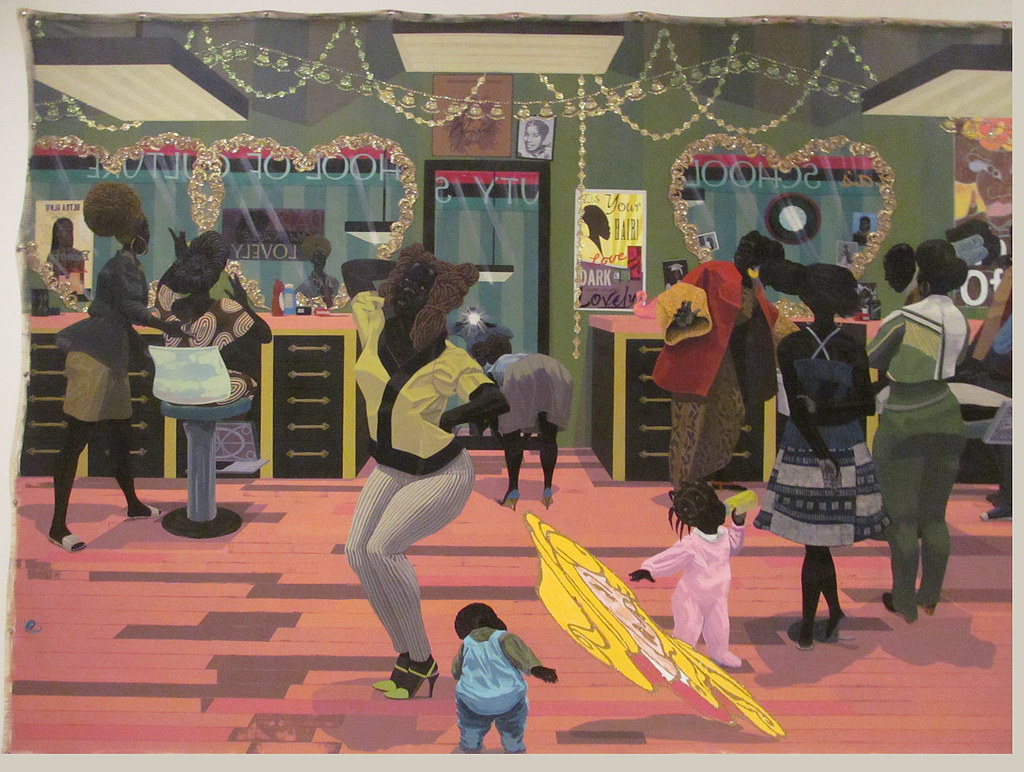1.2: Evolution of Modern and Contemporary Art
- Page ID
- 134902
The industrial revolution changed the world forever in the 19th century. The industrial age brought economic power to merchants and a growing middle class. The ability to cross oceans on machine-powered ships and trains to traverse countries expanded the interchange of economic goods and intellectual ideas. The world was also redefined in the levers of power, old empires began to decline, and new, independent countries emerged. The Ottoman Empire crumbled, and British dominance started to decline. The United States was a new country, and Latin America started its path to independence. Asia was in turmoil with colonization by European countries and poverty.
Art also changed dramatically in this century. With industry growth, new technologies and products were created for artists. Expanded capabilities to travel took artists out of their local arenas into the world and the intersection of different methodologies. Artists became portable with the invention of tubes to hold paint and easels easy to carry. Light and color, subject matter, and the portrayal of people changed as new art movements emerged. The Americas were influenced by the European styles until later in the century, when photography and prints became popular.
By the 20th century, globalization occurred worldwide as countries were connected through technologies, capital accumulation, and governmental systems. The world developed rules and regulations at the beginning of the century that became established norms by the end of the century. During this period, two world wars occurred, some countries amassed vast economic advantages, and others fell into poverty. Some governments were strong, and others collapsed. In the earlier parts of the twentieth century, European domination was evident. In the latter half of the century, the cold war developed with power accumulated by the United States and Russia. People migrated from the countryside and farming to the cities and industrialized jobs as populations increased and the world order changed.
Art also changed, and the controls of the old art world were discarded. Artists responded to the world's chaos, depressions, wars, and economic dominance with multiple styles and genres of art. Ideas of art moved quickly around the world. Art changed from images of people, landscapes, or nature to elements of lines, color, and dimensions, as artists experimented with abstraction, expression, and fantasy.
The 21st century brought a genuinely integrated world through communication, chained manufacturing, and transportation. The capabilities of information technology created people's ability from any place on the globe to communicate. Products flowed from multiple countries shipped to others in a global marketplace. Populations increased significantly because medical technology lengthened the human lifespan. With the growth of the population and the need for food, forests have been removed, and previously fertile farmland has become deserts from over-farming. Civilizations in this century have polluted and changed the formations of nature, causing the effects of global warming to endanger the earth's future.
The world of art is also integrated, and female artists and artists of color are accepted and successful, bringing alternative views of art. Art in this period frequently integrates digital images and mixed media. Some artists create spectacular installations, while others create jarring images or social expressions. Because of the availability of mass media and the internet, artists are influenced by history, modern fashion, or recycled materials; anything is possible in art. Much of the art in the new century is based on feminist, racial, or cultural relationships. Art dissemination is often expressed through social media, websites, and other technology.
Pre-Modern Art 1800 – 1860
In the 19th century, art was based on romantic interpretations or realist images, concepts, and ideas that led to the emergence of significant changes in the art world. Each of the different movements was based on similar colors; however, the meanings of the images changed from idealism to romantic ideals to the realistic events of life. Around the world, artists in other countries were more isolated and still used older concepts. Colonial art in America usually followed Neoclassicism, painting heroes of the Revolution. In Mexico, Baroque art styles continued to influence the artists.
Neoclassicism grew from the excesses of the Rococo and Baroque periods with more classical Greek styles. Perfected images of heroic figures, posed in static positions, were decorated with shiny, embellished clothing. Napoleon Crossing the Alps (1.2.1) has the dramatic image of Napoleon in his emperor’s splendor as he sits astride the horse in the middle of the Alps, a tribute to his heroism.

Romanticism started in France and England, focused on the uncontrolled side of humanity’s struggles. Heroic figures were no longer included; instead, emotions were portrayed in dark, brooding colors. The Raft of Medusa (1.2.2) depicts the futility and feelings of human emotions as the floundering, overcrowded raft is slowly sinking. Each figure demonstrates a different agony as they try to gain the attention of another ship.
.jpg?revision=1)
By the mid-1800s, Realism became a new concept as artists painted the scenes of real people they saw around them, in the fields or at work. Realism moved from ideological images to realistic views and was the forerunner of the Impressionists. Ploughing in Nevers (1.2.3) is a portrait of life, the farmer using his cattle to prepare the soil for planting. The artist’s brushstrokes became more dynamic and textural.
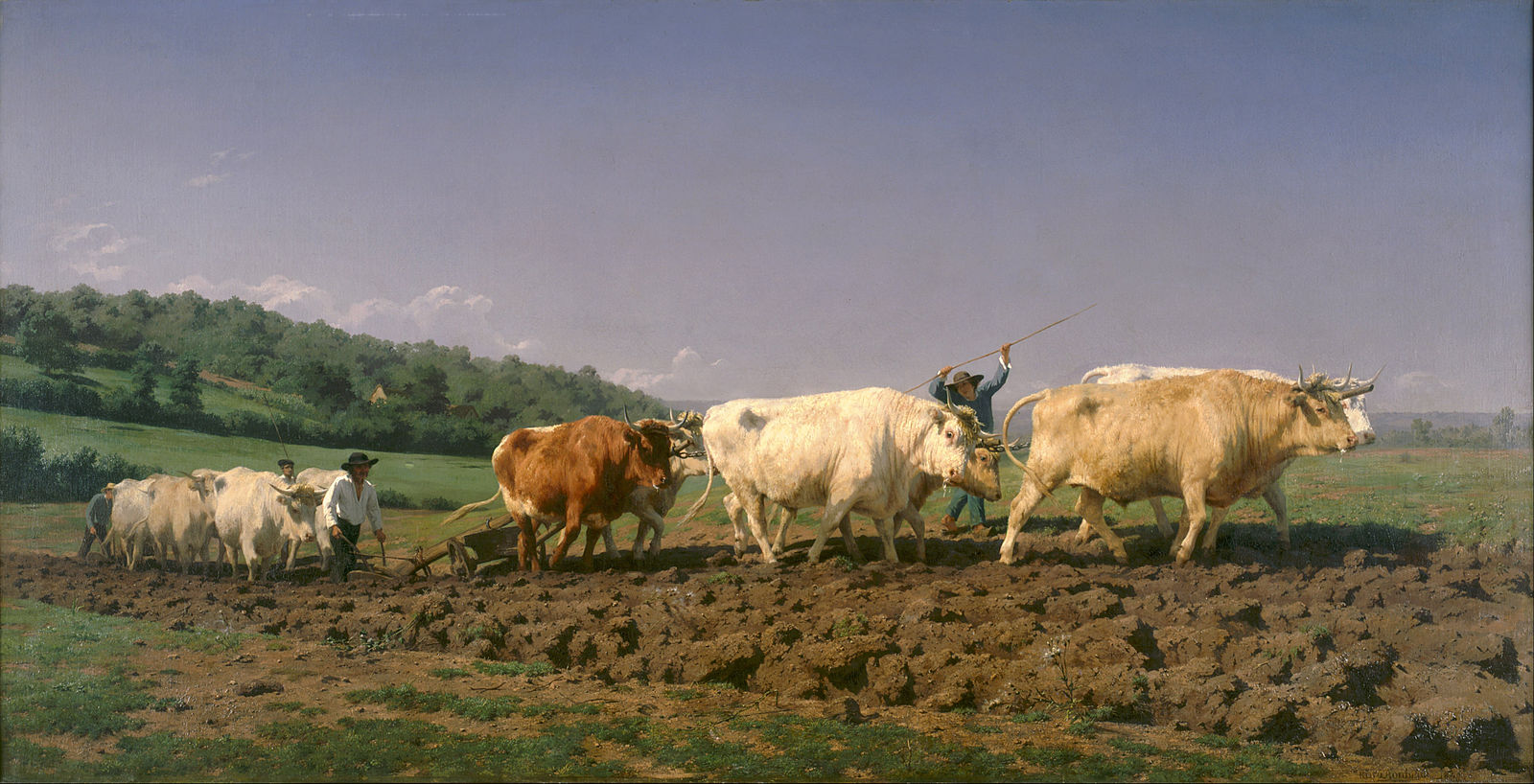
Modern Art 1860 – 1970
By the middle of the 19th century, artists began to rebel against the enforcement of European art styles by the Academie des Beaux-Arts, techniques established since the Renaissance. Multiple modern styles emerged based on the underlying principles that rejected history and realistic depictions, instead moving to color, lines, dimensions emphasizing abstraction. This period was a time of many different art styles, a time of experimentation, invention, and the use of unique materials. Impressionism was the first modern art movement based on Claude Monet’s Sunrise. The image contained a radical change in the use of brushstrokes, vivid colors, and light. Some of the unique movements included: Impressionism, Post-Impressionism, Art Nouveau Fauvism, Expressionism, Dada, Surrealism, Abstract Expressionism, Kinetic Art, Pop Art, Op Art, and Minimalism. Each of these had different definitions and qualities.
Impressionism is the style starting changes in art. Paul Cézanne is considered the inventor of Modern art, starting Impressionism and moving to other types. The invention of portable easels and paint in tubes brought the ability to paint outside, capturing natural scenes with actual light. They used quick, broad brushstrokes to paint quickly before the light and reflections changed. Color and its application were also an essential part of Impressionism. Summer Day (1.2.4) is outside in a natural setting, and the two women sit by the water. The reflections and shadows of light are easily seen in the image.

Post-Impressionism soon followed Impressionism, extending the use of color with short, broken brushstrokes. They painted what they saw only with some distortion as they expressed their feelings and emotions. Wheat Field with Cypresses (1.2.5) was painted with the realistic part of the work in the bottom as the rocks and grass and moving upward to one’s emotions seen in the movement of the sky.
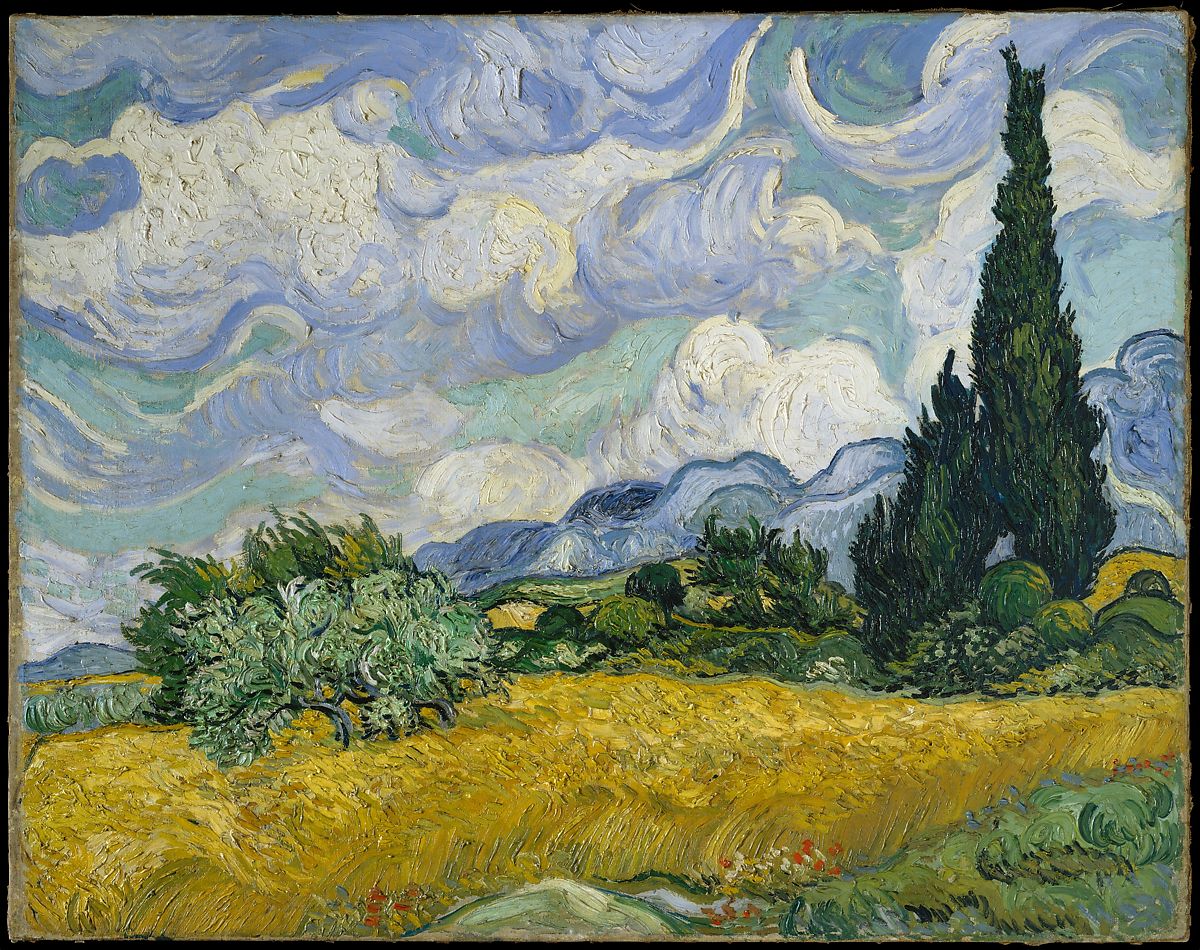
Surrealism brought a significant change to the art world. Instead of art based on everyday life, artists painted to reflect the subconscious mind with little control. They brought a view of madness, eccentricity, and bewilderment based on dreams or emotions, juxtaposing unusual elements together. The Persistence of Memory (1.2.6) is an image not found in the normal world rather a collection of timepieces reflecting the aspects of the subconscious.
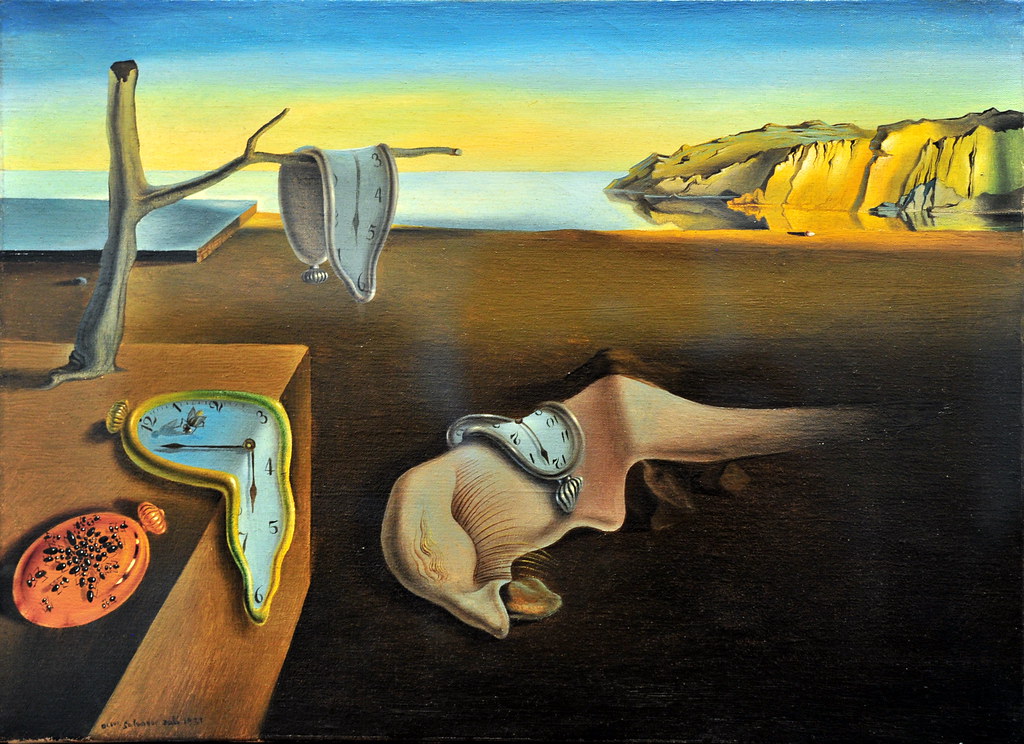
Abstract Expressionism artists created dynamic and highly abstracted art. The artists wanted their gestures of how they applied the paint to be included in the image and thought process. Some called it action painting as many artists walked around their canvas dripping and pouring paint, letting it land, and adding quick brushstrokes. The whole canvas became involved in the application of paint or bare parts of the canvas. Lady Bug (1.2.7) appears spontaneous yet was made with a planned application of the paint, some running, some applied with the brush.
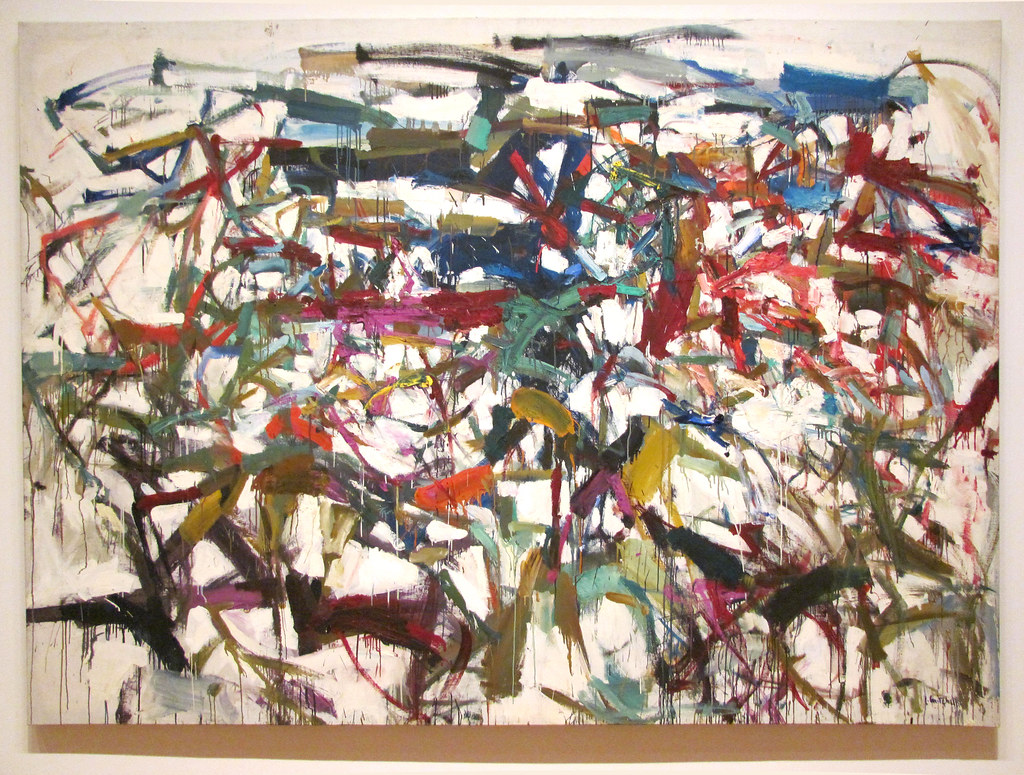
Pop Art was the outgrowth of artists’ interest in the expanding mass media, advertising, and the current culture. Bright colors were important, realistic, and frequently printed or recreated images. Their art blurred the lines of art. Campbell Soup Can (1.2.8) used a common, ordinary item found in the grocery store and turned it into art. The ordinary person related to cans of soup and understood the image.
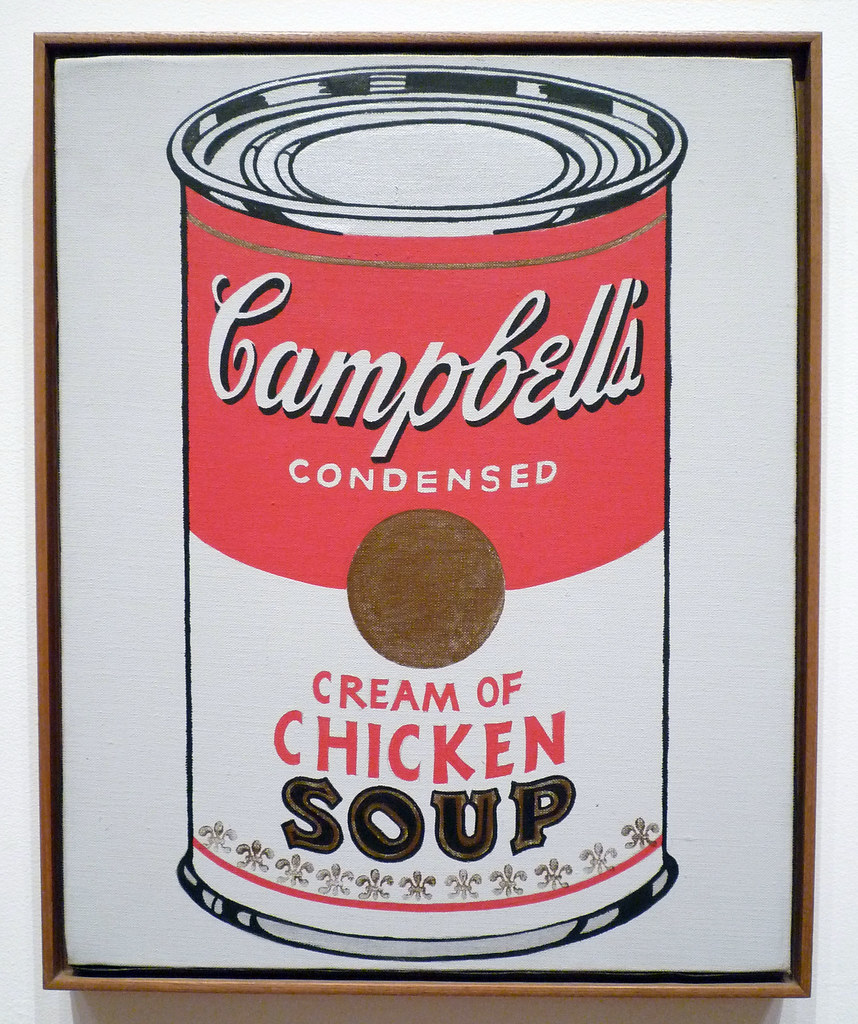
Op Art was based on the concepts of illusions and optical effects. Lines and shapes are used to provide images appearing to have dimension or movement. Repetitive colors help develop dimensional or vibrating effects. Vega-gyongly-2 (1.2.9) has bright colors with circles and squares of different sizes to bring the idea of a ball emerging from the background.
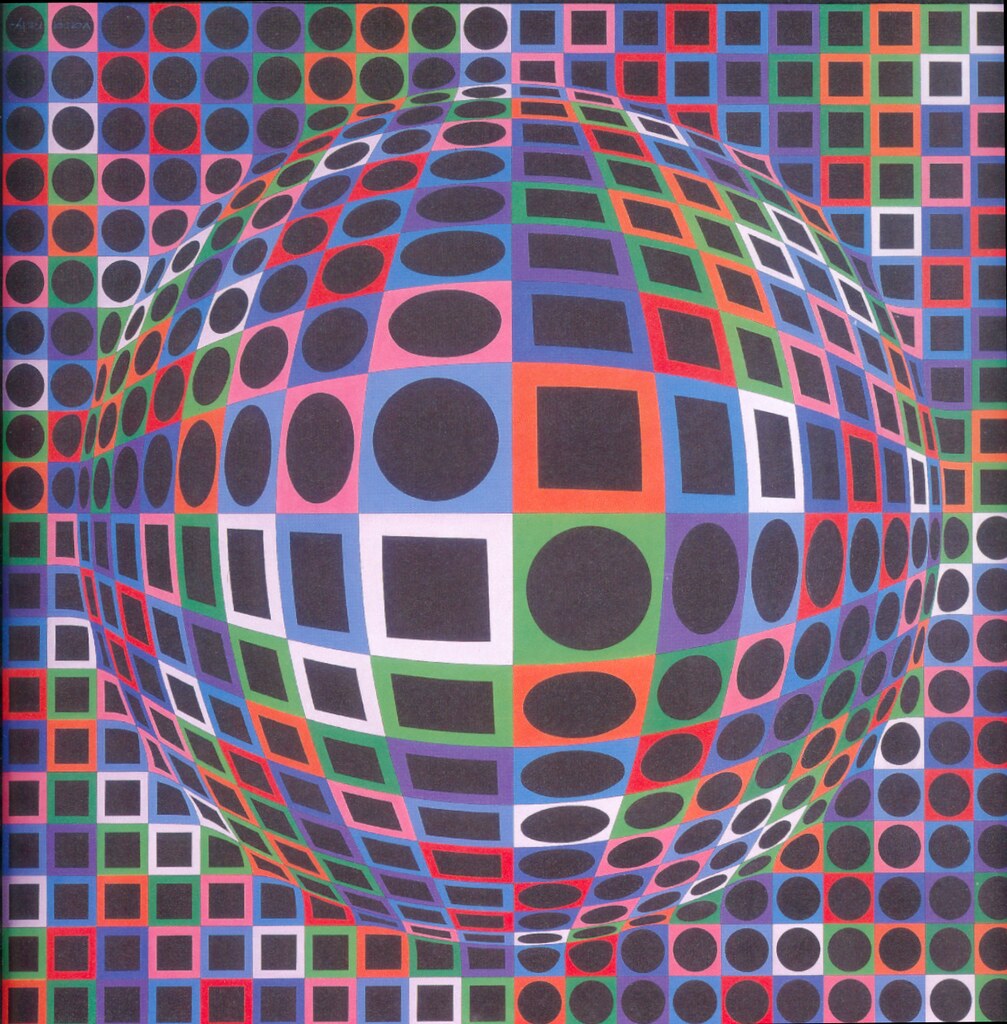
Postmodernism Art 1970-2000
Postmodernism started as a resistance to the concepts of Modernism. Postmodern artists wanted to exceed previous limits and began to deconstruct Modernism, experimenting with theoretical ideas and the use of new technology. Artists slowly replaced modern art concepts as part of society's general resistance to authority and the rejection of established paradigms. Movements in this section include Photorealism, Neo-Expressionism, Video Art, Modern Indigenous Art, Feminist Art, Young British Artists, Sculpture
Photorealism was based on the concept of painting an image resembling the exactness of a photograph. Artists worked with precise and exact details of the view in front of them. They usually focused on everyday locations like restaurants, storefronts, or industrial images. Amsterdam Diner (1.2.10) portrays the counter area of a restaurant as an ordinary worker waiting for his order. Each detail of the elements in the restaurant is exact, representing everyday life. Even the shiny silver sections of the restaurant are incredibly realistic.
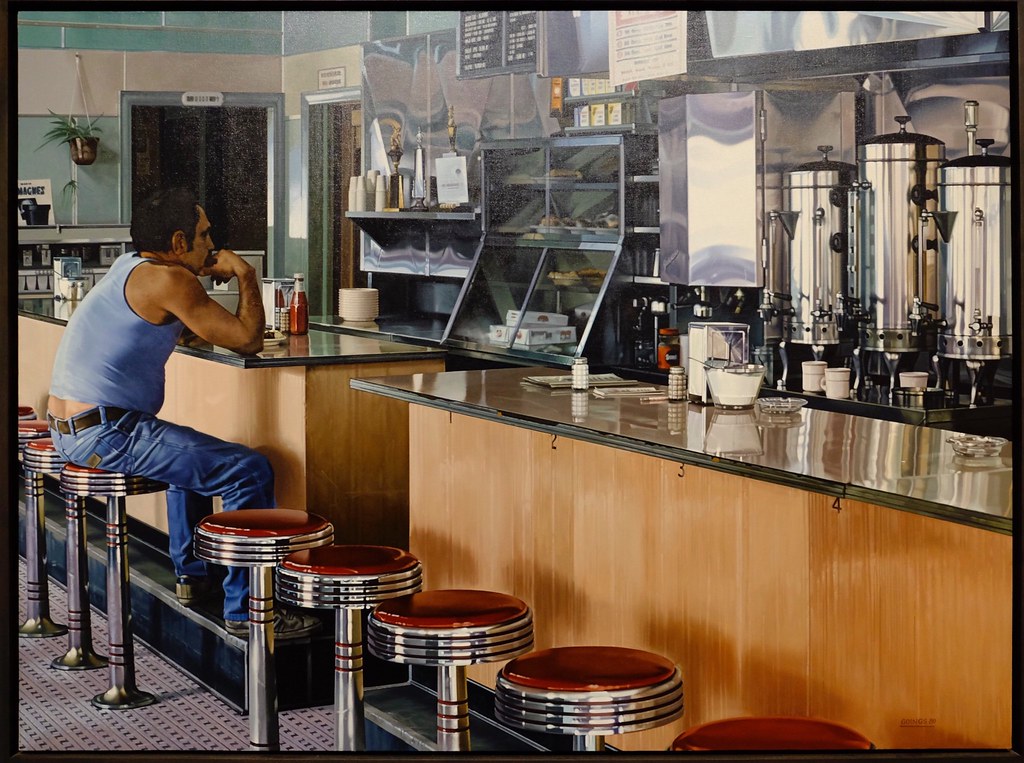 Figure \(\PageIndex{10}\): Amsterdam Diner (1980, oil on canvas, 111.8 x 151.8 cm) by hermien_amsterdam CC BY-NC-SA 2.0
Figure \(\PageIndex{10}\): Amsterdam Diner (1980, oil on canvas, 111.8 x 151.8 cm) by hermien_amsterdam CC BY-NC-SA 2.0
Neo-Expressionism was influenced by earlier movements and combined elements of Pop Art, Abstract Expressionism, and Expressionism. Neo-Expressionism used vibrant colors; the artwork was frequently distorted and emotionally intense. Flash in Naples (1.2.11) depicts two heroes based on characters in a comic book. The design is abstracted expressed in different images.
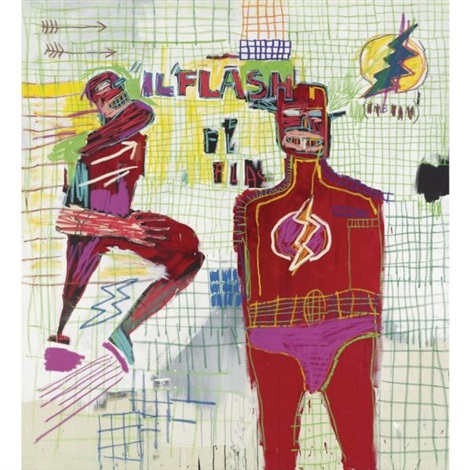
Cinematographic Art is based on using elements from the new, modern technology and the ability to take electronic parts and pieces and create art sculptures. Technology evolved and became cheaper, allowing artists to make videos and replay them. The Electronic Highway (1.2.12) is an image of the United States made from television sets, neon, and cables displaying different images on the screens.
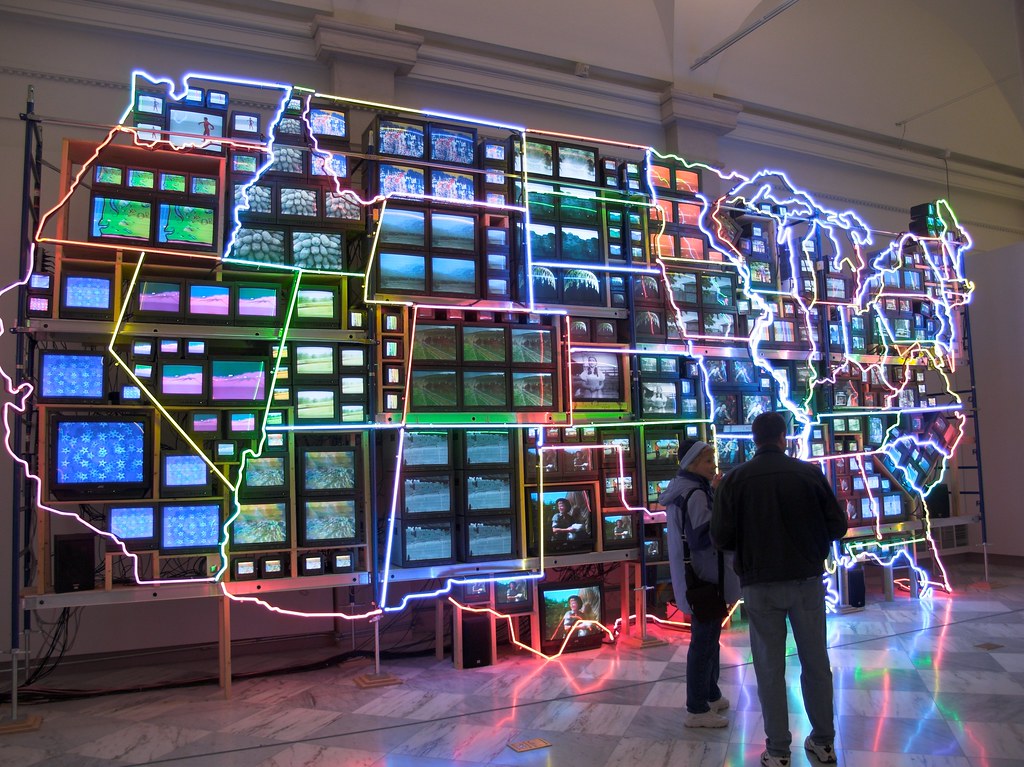
Contemporary Art 2000-present
In the 21st century, the world was truly global and integrated through communication capabilities and product supply chains. Transportation moved people around to interact and learn about other cultures. Art also travels worldwide, concepts and ideas flowing through the internet. Artists can sell their art throughout the world. New types of manufactured materials also bring new materials for artists to use, whether new or recycled. In the new millennium, social changes created a new focus for artists. Women have a more prominent voice in the art world. Artists of color create images of their own social identities. Contemporary Art includes Installation Art, Contemporary Figurative Art, Contemporary African Art, and Contemporary Architecture
Installation Art was a new concept in the 21st century with large-scale constructions made from unusual and mixed media. The installations were site-specific and fit into unique rooms or outside. Viewers walk through the installation and are frequently part of the artwork. Dot Obsession (1.2.13) uses mirrors to help increase the images in a large space. A viewer can enter the scene and become immersed in the formation.
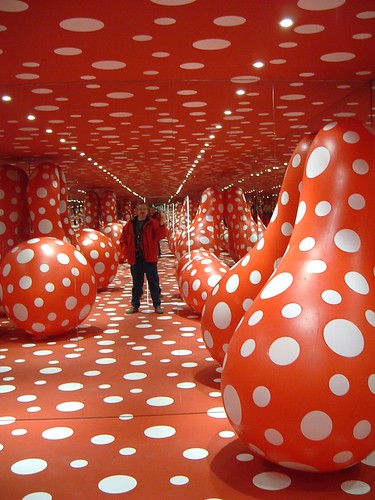
Contemporary Figurative jettisons standard ideas of European-Western figures. Artists used figurative scenes to create images reflecting social changes and new narratives. Female artists were able to change the way women's body was portrayed, and artists of color incorporated their identity and experiences into their art. School of Beauty, School of Culture (1.2.14) depicts the local beauty shop, a social place to gather and interact. A black artist is showing life in a community seldom portrayed in the past.
